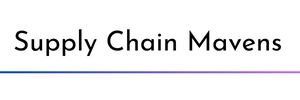planning-620299_1280 plan a b c hand yogesh more pixa.jpg
by Cynthia Kalina-Kaminsky
Plan is a 4-letter word
Or is it?
U.S. President Eisenhower said “…plans are worthless, but planning is everything”.
Typically, in supply chain the world, plan is used as a verb instead of a noun: plan instead of planning.
Having done planning:
when risks enter your supply chain scene, you’ve already got a mitigation plan for that risk or for something similar. You shorten the time to a viable answer to the risk.
everyone knows what is in the resulting plan. This enables alignment throughout the supply chains as well as into the value chains that support your supply chains.
you developed (or found) trusted data that was checked, verified, troubleshot, and used in decision-making. Lacking good data, your plan becomes the equivalent of an opinion on what should happen next. It is difficult to defend and difficult to show how it will benefit the company.
you can quickly evaluate new/unused options when something goes wrong or is outside the accepted plan. Your team has already done a lot of critical thinking on how this plan achieves goals, fulfills the strategic plan, and meets customer expectations of your company. You have a solid jumping off point that is up the learning curve, shortening the time to an adjusted plan based on new realities you are facing.
There are, of course, more good things to say about plans and planning.
That being said… why isn’t a plan available more often? One that people understand and trust?
What I often hear is:
We already know the problem and don’t need to plan. We’ll use something that we’ve used before because it works.
But if it works, why is the problem back?
We already know our customers and don’t need to plan. They will accept what we provide because they’ve been our customers for a while.
But will they stay your customer if they experience actions that cost them time? Perhaps money? A bit of angst because either you don’t know them as well as you thought or because actions performed don’t create the performance they require?
It takes too long to plan and we are already working full out.
A plan aligns activity, minimizes confusion (which needs time to straighten out), and helps achieve the performance desired. Does it take longer to do it right as fast as possible, or, to do it fast as right as possible?
We don’t have the data we need.
Collecting trusted data often starts with understanding what must be measured and agreeing to the definition, method of collection, and reporting. Planning can help identify data needs so that solid data you require is available for future planning.
Planning helps uncover gaps in process knowledge and data availability – exactly what is needed in today’s fast-moving environment. Data is everywhere. But just because you have data doesn’t mean it is useful.
Eventually, planning runs more in the background. Adjusting and communicating in a timely manner to keep your supply chains moving, the strategic plan met, and your customers happy.
Not planning means you’ll be running around placing band aids on processes to get them running. Or expediting material because waiting to order material until after a customer order comes in doesn’t change lead times. Or different parts of the business will solve the same problem in different ways and both solutions will be activated leading to confusion and tying up product flow while things are sorted out.
And while more S&OP (Sales & Operations Planning) planning is being brought into companies, there is little knowledge of how to link it to the larger Integrated Business Planning and then into the strategic plans of the company. Strategic plans often don’t talk in supply chain performance language, so how can the two be connected?
Using a proven framework will help immensely. Innovation is allowed because you don’t have to keep reinventing the wheel on processes, metrics, alignment, transparency, agility, reliability, data, and more. The framework helps structure data delivery to where it is needed with standardized plan elements.
A plan that moves your company forward without the fits and starts a world without planning experiences.
You can learn more about aligning planning and the framework by clicking here.
You’ll learn about a framework that specifically includes strategic, tactical, and operational planning elements you can pick and choose from as you mature your planning processes. Here’s the link for information.
Luckily, plan really doesn’t have to be a 4-letter word.
#Plan #planning #supplychainplanning #trust #data #alignment #transparency #riskmitigation #supplychainframework #SCOR #CynthiaKalinaKaminsky #SupplyChainMavens
Cynthia Kalina-Kaminsky is an ASCM Master SCOR instructor and consultant. She’s also a supply chain professional and will be teaching the upcoming SCOR-Framework workshop.
Supply Chain Mavens brings solid supply chain knowledge to your company. With backgrounds in planning, materials management, manufacturing, Lean, value engineering, and global sourcing experience into every training. Supply Chain Mavens has trained thousands of supply chain professionals in both the ASCM certification and custom supply chain curriculums. They offer SCOR workshops.


